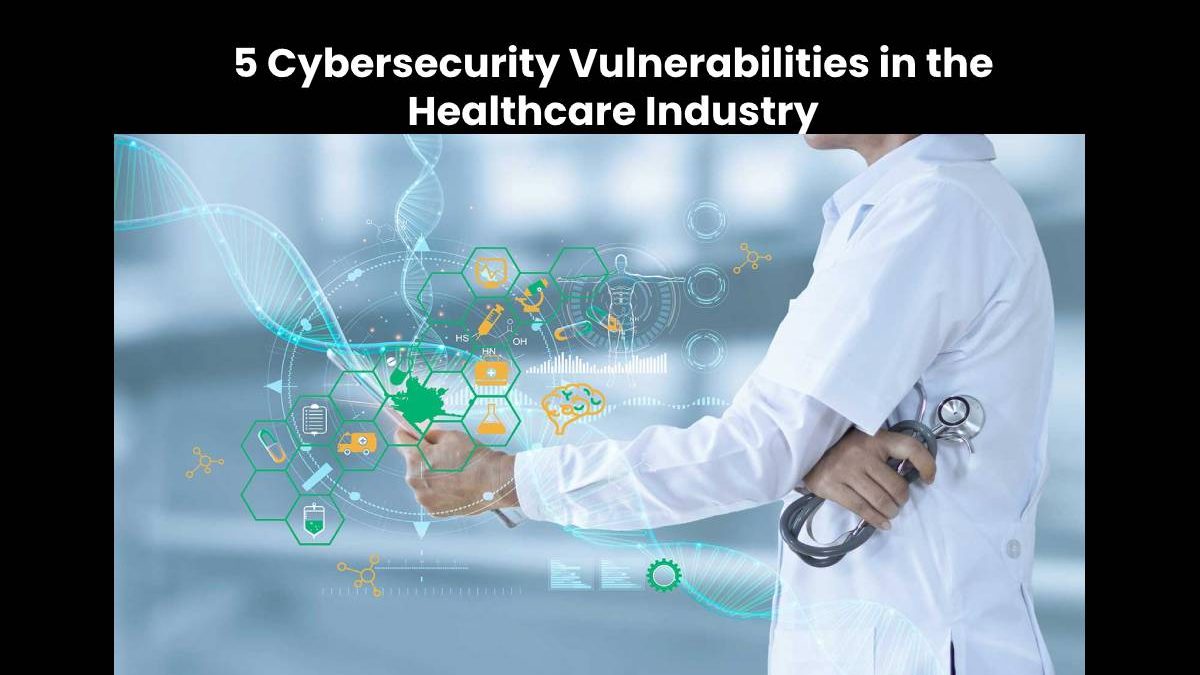5 Cybersecurity Vulnerabilities in the Healthcare Industry
The healthcare industry spans thousands of individual institutions, countless medical professionals and staff, and huge geographical locations. It also happens to couch incredible amounts of digitally stored information. Much of this data is extremely sensitive: health histories, payment information, HR records, and much more all float through the healthcare industry’s digital systems and can often be stored for long periods of time. Because of this, the healthcare industry must take extreme care of its digital information systems and storage locations. Because of the industry’s size, this can be hard to do.
Covered here are five areas where the healthcare industry should pay extra attention to make sure it keeps its stakeholders’ information safe from cyberthreats.
Table of Contents
The Nature of Healthcare: Cyber Vulnerabilities
As mentioned above, the healthcare industry utilizes massive data stores and digital information. As the prevalence of digital information increases, healthcare provision can be made more efficient, intuitive, and effective. However, this also necessitates more digital data stored and shared between more places. The growing interconnectivity between healthcare information platforms increases the risk of data breaches and misuse. These and other forces that affect the way healthcare systems operate make cybersecurity a top priority for healthcare providers. Here are the top five areas of cyber-vulnerability within healthcare:
Protection of Patient Information.
There are several ways that patient information, as well as its storage and use, can leave a healthcare provider susceptible to cyber-threats. Stringent regulatory requirements like the Health Insurance Portability and Accountability Act (HIPAA) issue strict rules about how and when patient data should be released and used.
When healthcare information management systems contain hundreds or thousands of detailed patient health records, those systems can become attractive targets for hackers. Large stores of personal, health, and payment profiles must be guarded against infiltration. Further, threats don’t just originate outside the healthcare system. Individuals that have access to these database or systems would be able to manipulate, steal, or hold this information for ransom if they felt so inclined. It’s important to treat these systems, as well as those who have access to them, with extreme caution and care.
The Prevalence of “Legacy Systems”
Because hospitals and healthcare providers often don’t change their technological or storage systems until absolutely necessary, large healthcare providers often utilize old systems much longer than advisable. Out-of-date systems and software are not equipped with current safety and security measures. They can often be more easily compromised by hackers than those in other industries that are more likely to keep their software up to date. Healthcare providers should prioritize updating their systems regularly to ensure that they are sufficiently protected.
Unique IT Challenges for the Healthcare Industry
Because of its nature, servicing the healthcare industry with adequate technology and digital performance can prove particularly challenging. One reason for this is the innate value of the information housed in healthcare databases that requires not only stringent protective measures but compatibility with specific compliance regulations, complicated access and encryption features, and more.
Another unique difficulty for healthcare IT systems is its high need for interoperability strong integration and compatibility functions for the multi-tool conglomerations often necessary to provide adequate functionality for healthcare system needs. A third complication is the prevalence of sophisticated hardware integrations that often accompany healthcare software needs. Automating medication dispensers; operating cameras, scopes, scanners, and other equipment; and more can all be part of a healthcare’s digital framework and must be accommodated.
Facilitating Appropriate Data Usage
The healthcare industry makes thorough use of data to facilitate and aid many types of decision-making. Increasingly, healthcare institutions and professionals are expected or mandated to maintain detailed reporting across a range of types and applications. Data-informed operations can create substantial benefits for healthcare organizations that include increased efficiency and accuracy. However, they can be time-consuming to design and maintain and require high levels of digital proficiency and compliance from professionals and staff. Additionally, increased amounts of stored and leveraged data also mean increased security risks and thus increase necessary measures for keeping that data safe.
Training Healthcare Professionals in Adequate Cybersecurity Measures
The workforce within the healthcare industry is a vast population that ranges widely across multiple demographics. Many healthcare professionals have a low level of technical prowess and struggle to interact with the systems they’re required to use on a daily basis. To exacerbate this reality, the high-security environments that digital healthcare information systems require often necessitate training and familiarity with the tools that can take time to develop amongst healthcare system staff.
Though other nuances can exist within the healthcare industry that also make it more susceptible to cyberthreats, these five areas are the ones that healthcare industry players whether hospital executives, outpatient facility managers, or medical personnel of various types that have decision-making power over their digital systems and approaches should be aware of and make sure to proactively counter.

